Basic Setup for a Mantis Shrimp
Hi folks, i recently launched my Stomatopod website as there was lacking a proper, fact based website for these and i thought i would post one of the articles here for the AQ members. I know this was intended for a UK audience, and there will probably a lot more variety of mantis shrimps sold in singapore, for information on other species you can take a look at the care listings on my website.
A lot of people are getting into Mantis, i have around 12 now and have done so for a long time, here are a few basics you should know...
Mantis shrimps have all of a sudden become very popular in the UK, a trend that follows from the US. Setting up a tank for a Mantis is simple, but very species specific.
It really depends on what type of Mantis shrimp you will be getting as to tank size. You will 99% end up with wither:
Pseudoquilla ciliata:
Odonodactylus scallyrus (Peacock or Clown Mantis):
Gonodactylus chiragra:
Lysiosquilla maculata (Zebra Mantis):
They all require sand, at least 3 inches deep (Lysiosquilla maculata/Zebra Mantis being the exception) and a bit of water movement, and you need to decide on the mantis you want before you get it, or at least reserve it for a week until you can get the tank setup. These animals are VERY VERY sensative to chemicals. I lost a lot of mantis shrimps due to Frontline SPOT ON (not spray), all corals and fish are were fine. Also fly spray, waxing a floor or if you forget to wash your hands and they have anything on, hair gel, skin creme whatever will kill them and cause a slow and painful death.
When youve noted that and want to keep them here goes for the 4 listed species:
Pseudoquilla ciliata:

A very good choice, this Spearing mantis is often seen hunting from its burrow and comes in many bright colours. Often available in yellow, green, white and sometimes green with a white stripe. These animals being spearing mantis shrimp can cause no damage to your tanks or cleanup crew, however fish will be eaten. Anything too large fish wise will still be attempted to be eaten but may take your ciliata for a ride around the tank. Do not keep fish with this animal.
Tank setup wise, it does depend on the size of the animal, these get about 3 inches and should have an 18 inch aquarium with a 3 inch deep sand bed, rubble and a few larger peices of large rock. Lighting is not important, however something you may wish to consider about this species is that when it moults it will change its colour to match its surroundings. I had a white one that turned jet black with white specks to immitate his black pipe with sand on. Yellow ciliatas are usually found around yellow toadstools.
Odontodactylus scyllarus/Peacock Mantis:
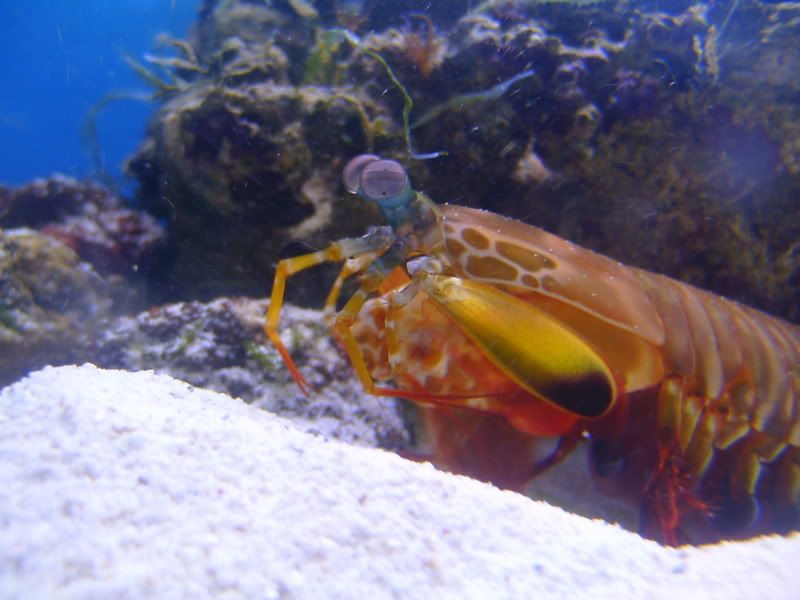
A large, powerfull Stomatopod with striking colouration. This is one of the largest available manits shrimp and has great personality. Very outgoing and packs a punch. You will need to line the bottom of your tank with acrylic for this species as they can and will break glass when burrowing. They require a large tank, at least 3ft long, with a 3 inch sand bed and plenty of rocks and RUBBLE. This species constructs a U shaped burrow out of rubble and rock. The only problem with these mantis are that they always come in large, this means it literally could only have weeks or a month to live. If you get a peacock i strongly suggest you wait until you find a small (under 3 inch) one that you could watch grow to around 7 inches. Low lighting is essential as these Stomatopods are highly susceptable to Shell Disease, which will kill them. T8 lighting is appropriate. Do not use T5s unless the tank is at least 24 inches tall. They may tolerate larger, non predatory tankmates...or they may just eat them. This goes for all smashers.
Gonodactylus chiragra/"Common Green Mantis"
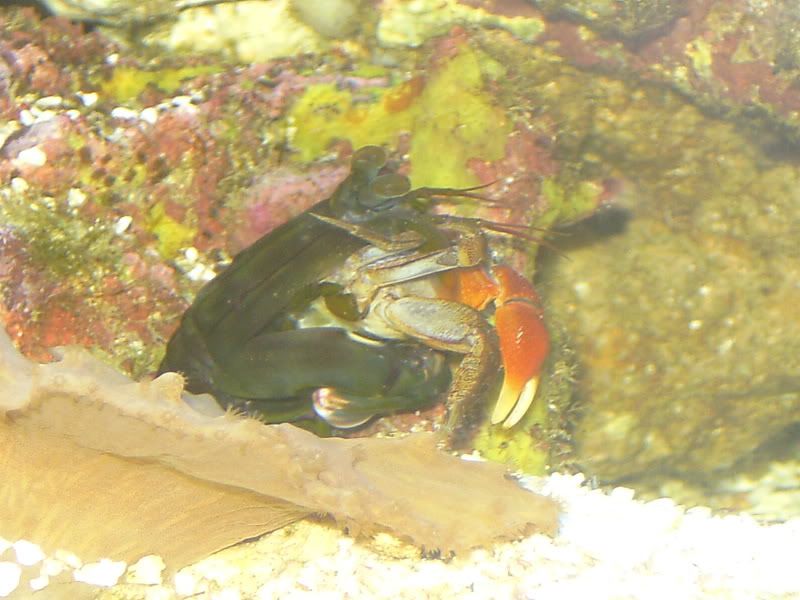
Try to avoid this species at all costs. Although they look good, come in a range of green and pale green colours they are very reclusive. Like a lot of Gonodactylus colour is not the key to IDing these animals, its their meral spot. The meral spot is a round spot on the inside of each raptorial appendage (smasher/claw), in this species it is white. These mantis need a sand bed of 3 inches, one rock and rubble. These mantis will bash a hole in the rock and use that as a burrow into the sand, leaving just the eyes sticking out. These mantis are very aggressive and very reclusive. Definatly the worst choice for an aquarium animal. These may catch fish but it is unlikely as they will rarely leave their burrow. If you type Gonodactylus chiragra into youtube you will see a video of one of mine smashing a crab. These animals get to around 4 inches max. Tell tale signs are red uropods (tail feathers) and white spots on the back of the head. Females are lighter in colour than males usually, although telling the sex is easy,males have a pair of gonopods after the 3rd set of legs. They are black in this species.
Lysiosquilla maculata/Zebra Mantis
Making a burrow:
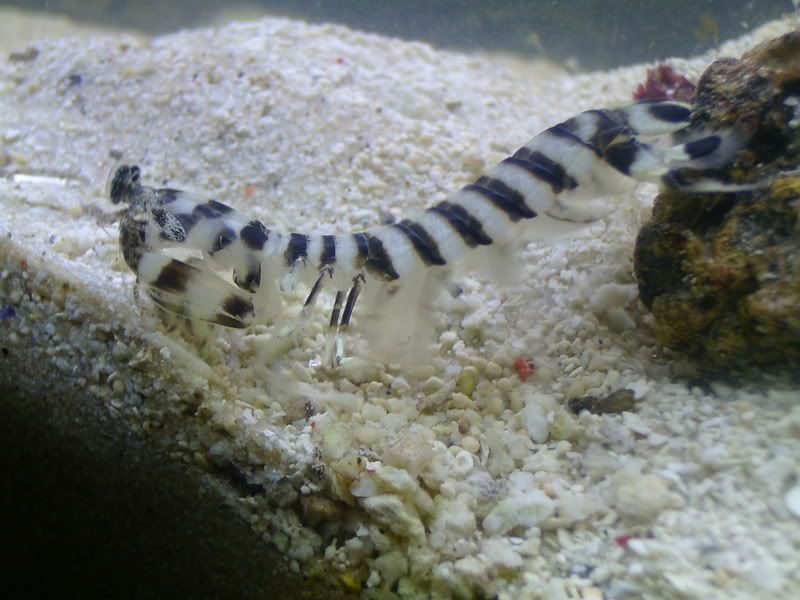
In the burrow
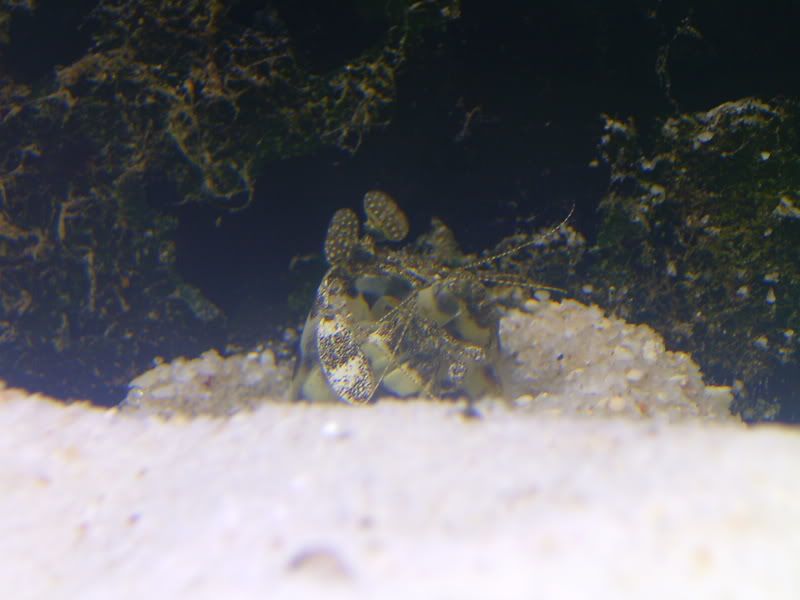
An excellent single display animal. These mantis require nothing but sand, water and flow. A lot of sand. These are one of the largest mantis in the world and reach 14 inches. They build a burrow from mucus in the sand and NEVER leave their burrow except to find a mate, interestingly this is one of the only mantis shrimp that will live monogomously in pairs...males are often only ever available as they are the ones that defend the burrow and hunt for food. This mantis needs a sand bed at LEAST twice as deep as the animal is long. Tank size is irrelavent. Rocks or cleanup crew are not needed, but the sandbed is a must. These animals are very fast and will injure you. Very easy to keep and very fun to watch.
All of the smashers need to be fed live hard shelled food like crabs and snails to keep their raptorial appendages in check, if you dont do this they will simply tear them off when they moult. When they do moult this is the most worrying time, bad moults can mean death. The mantis will typically close its burrow a few days before and after the moult, you should turn lights on as normal and off as normal and do not disturb the mantis in any way. Do not add Iodine, there is no proof that it does any good but some that it does bad.
Any other questions feel free to ask.
All photos and article is copyright MantisShrimps.co.uk, please do not use without permission.
Thanks
James
Currently keeping many wild betta species and other anabantoids.














and others...







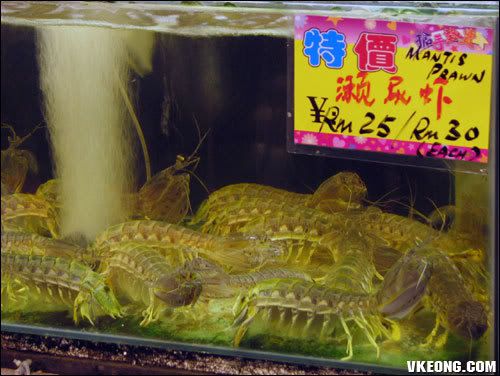
and others...


























Bookmarks